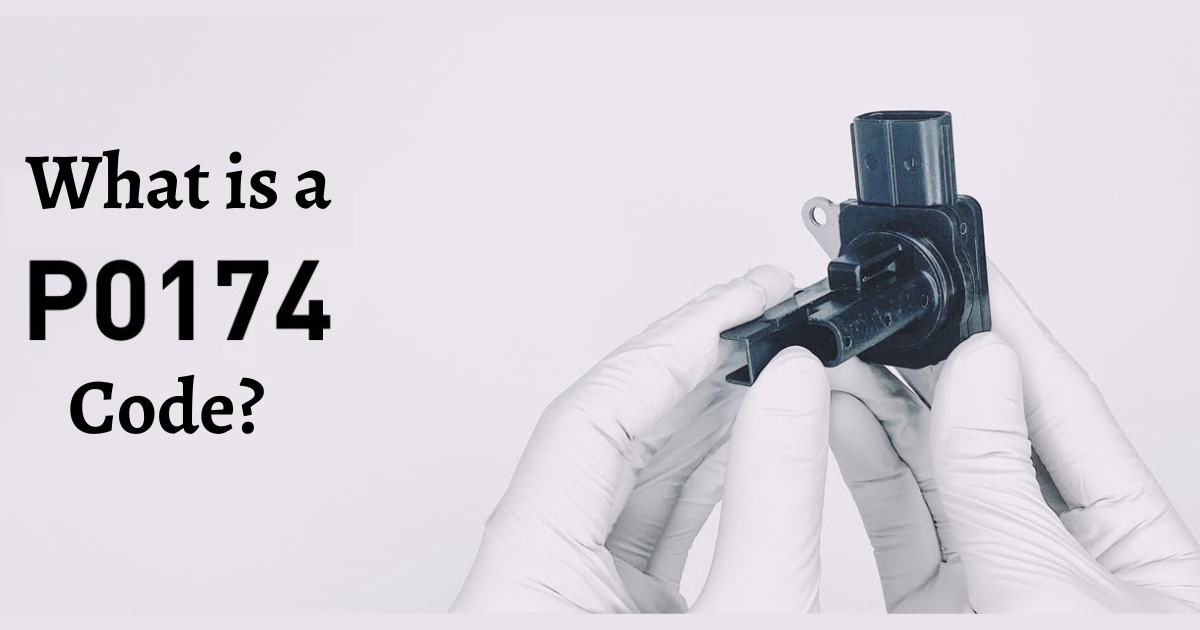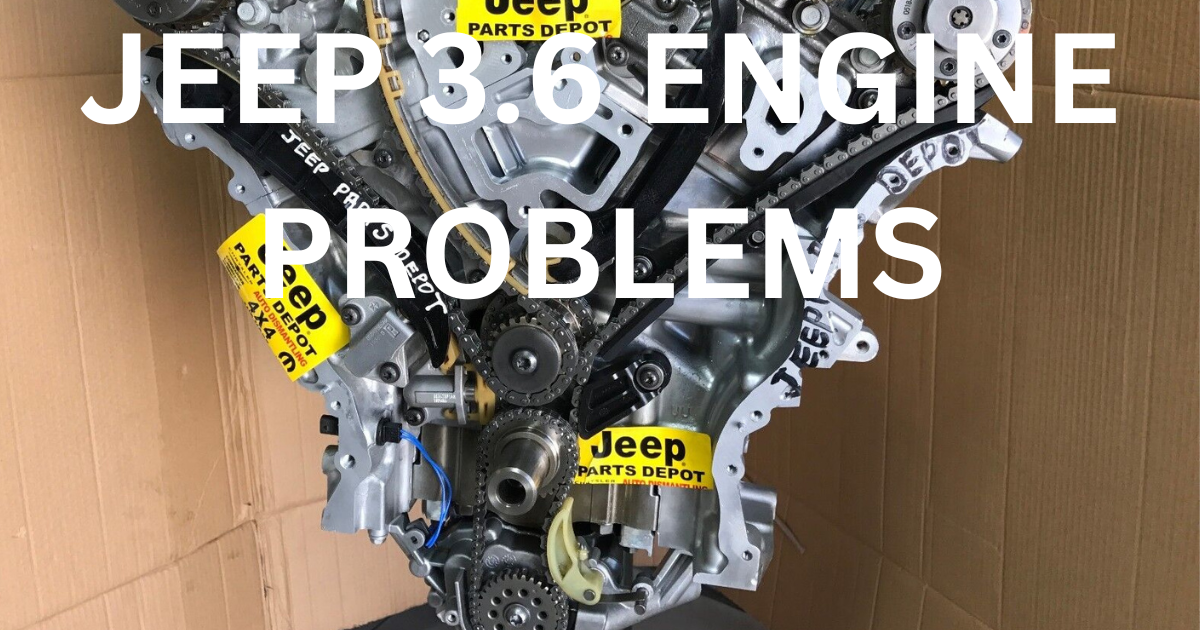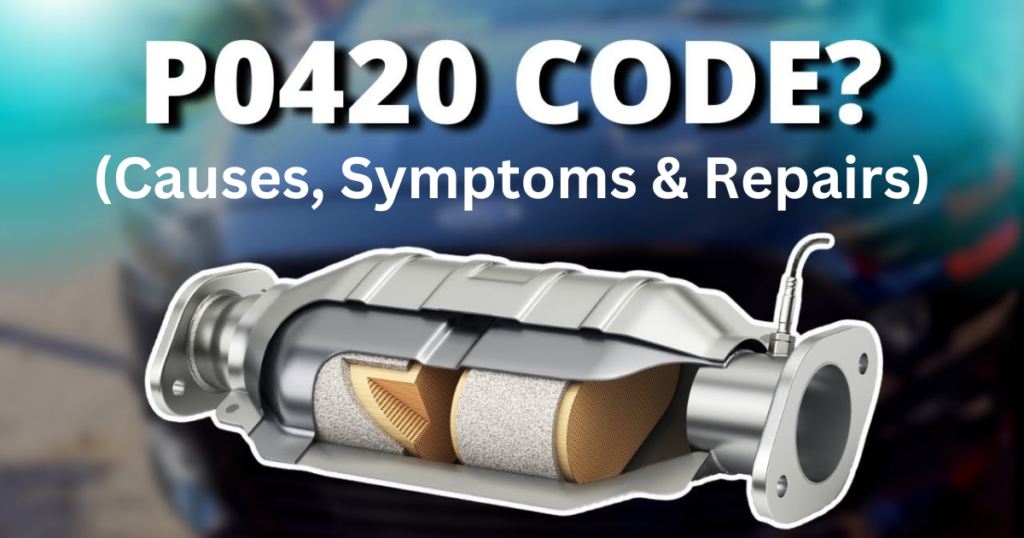
The error code P0420 stands for “Catalyst System Efficiency Below Threshold.” It is a generic OBD-II trouble code (DTC P0420) that can be found in all makes and models of vehicles produced after 1996. The P0420 code is also referred to as ‘OBD II Code P0420 Bank 1’.
P0420 is a common emissions fault code, and it indicates that the catalytic converter is not working properly. For the catalytic converter to work at its best, the emissions or feed gases that go into it must be perfectly balanced and not excessive.
If the above-mentioned balance gets disturbed, the p0420 code will appear. In this article, we will have a detailed look at the causes, symptoms, and fixes of the p0420 code. So, let’s begin with defining the p0420 code in detail.
What is the P0420 Code?

The error code P0420 indicates that the efficiency of the catalyst system is low. This code indicates that the oxygen levels are below the normal threshold (Bank 1), which is usually a result of issues with the fuel or exhaust systems in your vehicle. It can be tricky to diagnose at times.
The catalytic converter is a part of the vehicle’s exhaust system. It produces carbon dioxide (CO2) and water (H2O) by oxidizing the leftover unburned fuel and carbon monoxide (CO) from the combustion process. Moreover, it converts nitrogen oxides (NOx) into nitrogen.
The converter utilizes two oxygen sensors: one upstream and one downstream. Similar readings from both sensors would indicate a problem. If the Powertrain Control Module (PCM) detects a problem with the catalytic converter, it will set off the P0420 trouble code and illuminate the check engine light.
Symptoms of a P0420 Code?
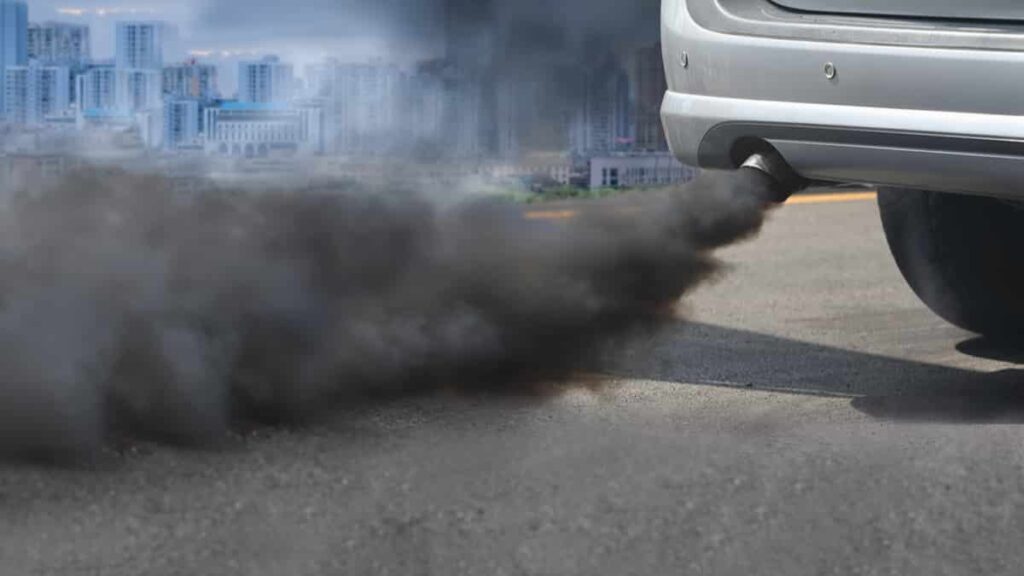
The most common and initial sign of a P0420 code is the activation of the check engine light. Second, you might not be able to exceed 30mph (48 kph) to 40 mph (64 kph) since your engine won’t operate as smoothly as it normally does. This is because the engine’s power output has dropped. Additionally, the exhaust may smell like rotten eggs. This also occurs when the catalytic converter operates beyond regular driving parameters or on overtime.
Causes of a P0420 Code
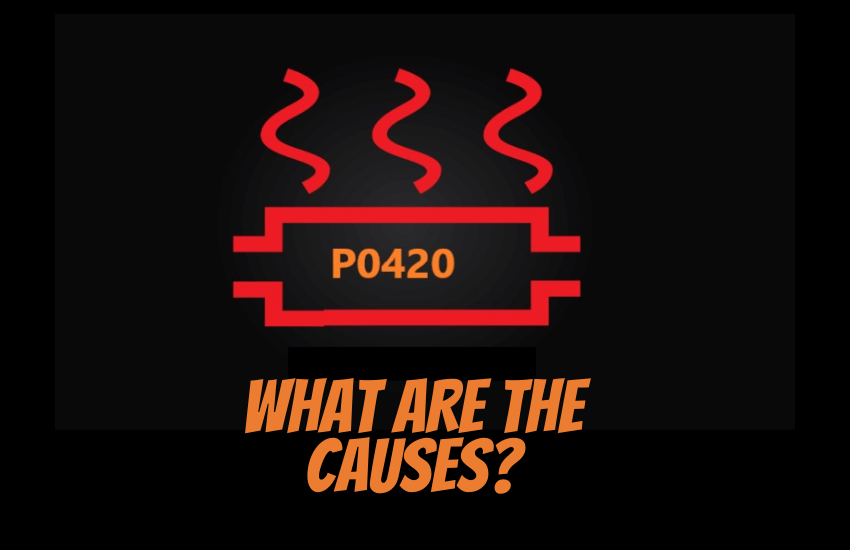
A defective catalytic converter is the most common cause of a P0420 code. Other potential causes include:
- Damage or leaking in the exhaust manifold
- Leaks or damage inside the exhaust pipes
- Engine misfire
- Contamination of catalytic converter oil
- Unreliable coolant temperature sensor for engines
- An issue with the front or rear oxygen sensor
- Damage to oxygen wiring
- A loose connection in the O² wiring
- Leaking fuel injectors
- Increased fuel pressure
- Using the wrong fuel type (for example, using leaded fuel instead of unleaded)
Diagnosing the P0420 Code
Here’s a brief overview of how to diagnose and troubleshoot the P0420 engine code:
- Firstly, ensure that P0420 is the only engine error code present.
- After clearing the code, continue driving for about fifteen minutes. Check to see if the code is returned. If not, go through the steps again just to be sure. If DTC P0420 shows up, there is an actual issue.
- Check the exhaust system for rust, holes, damage, or other possible leaks. Don’t forget the exhaust pipe; this is where a lot of leaks start.
- Check the oxygen sensor’s voltage reading. Standard engine readings should be between 0.4 and 0.5 volts on most engines. If it’s noticeably off or bouncing, there’s probably a catalytic converter issue to blame.
- Error codes can appear at any time and are a sign of minor issues with engines. In many cases, the problem might be solved by simply clearing and erasing the code. If not, it’s time to identify the cause of DTC P0420. For exhaust leaks and cat failure, the above-mentioned solutions work fairly well. But you’ll have to use a little more creativity and problem-solving skills if you’re getting more engine codes.
How difficult is it to diagnose a P0420 error?
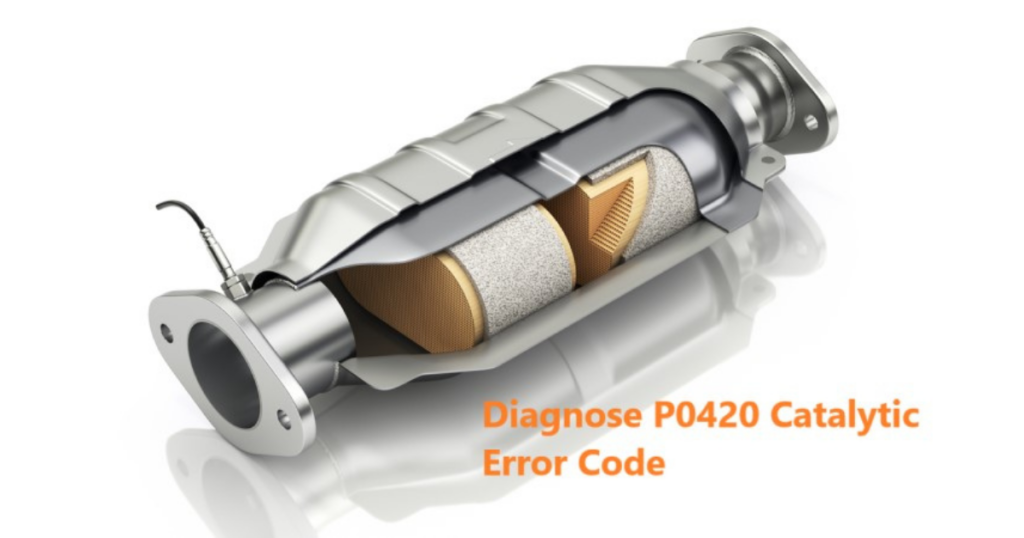
You need to accurately diagnose the P0420 error code before you start any fixes. Most repair workers will use an OBD-II scanner to obtain the specific code indicated by the Power Control Module (PCM). The PCM will display the P0420 code if the voltage of the downstream oxygen sensor lowers and varies similarly to the voltage of the upstream oxygen sensor. This is a clear indication that the oxygen levels are high.
The mechanic will look for engine misfires, ignition issues, and even fuel system defects if the upstream and downstream oxygen readings show no obvious anomalies. The mechanic may also examine the rear O2 sensor for signs of severe wear or damage.
A specialist will monitor the freeze-frame data and conduct a test drive of the vehicle. This allows them to determine whether the O2 sensor at the back is working properly. Lastly, if you’re having problems with the PCM, you should consider upgrading to the newest version. It is not unusual for your car’s issues to stem from an outdated PCM.
Possible Repairs for the P0420 Code
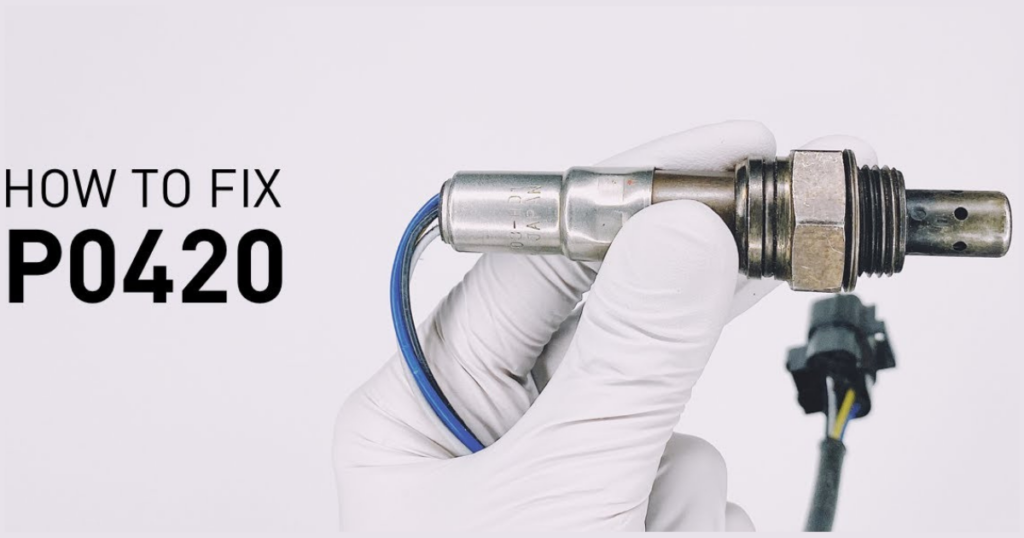
Error Code P0420 can be fixed by applying these repairs:
- Either replace the muffler or fix any leaks.
- Change the exhaust manifold or fix any leaks in it.
- Fix leaks in exhaust pipes or replace them.
- Change the catalytic converter (most common).
- Change the coolant temperature sensor on the engine.
- Change the oxygen sensor on the front or back.
- Fix or swap out any broken oxygen sensor wiring.
- Fix or replace the oxygen sensor’s connection.
- Fix or replace any faulty fuel injectors.
- Diagnose and fix any malfunctioning issues.
- Examine and fix any more relevant error codes that the Power Control Module (PCM) has stored.
Repairing the P0420 Code at Home

You can easily fix the P0420 engine code yourself. But there’s a catch: before making any changes, it is vitally necessary to identify the issue accurately.
Depending on where the issue started, you might have to:
- Replace the catalytic converter.
- Change one or both of the O2 sensors.
- Change the O2 sensor’s wiring or connectors.
In addition, you might need to replace or repair your car’s muffler, update its software, or swap out any leaking exhaust system parts. But, if you’re not sure what fixes your car needs, take it to a professional for a full diagnostic checkup and repairs.
Cost of Repairing a P0420 Code

Depending on the diagnosis, DTC P0420 repair costs vary significantly. You can weld the holes yourself for almost nothing if it’s just a small exhaust leak. However, catalytic converters can be expensive. In general, fixing a P0420 could cost anywhere from $10 to $2,000 or even more.
Is the P0420 Code a Serious Issue?

Engine code P0420 doesn’t usually pose a risk to the safety of drivers. It’s unlikely that this error will affect the vehicle’s ability to drive safely or reliably. But, your engine may produce more harmful pollutants due to Bank 1’s underperforming catalytic system. Combine this with the check engine light, and you’ll not be able to pass the emissions testing.
As with any engine problem, the best thing to do is to find out what’s wrong and fix it as soon as possible. Therefore, we do not advise you to ignore these challenges for a few weeks or months. Instead, continuing to drive with engine code P0420 is most likely safe. Apply your best sense. If the vehicle feels dangerous, or if there are other engine codes, serious symptoms, etc., proceed with caution.
Can You Drive with a P0420 Code?

In most cases, driving with having P0420 present is safe. Apart from the blinking check engine light, a driver might not notice any significant changes in the vehicle’s performance.
If you notice the engine is running lean, you shouldn’t drive it or, at the absolute least, reduce the throttle input and engine RPMs. Operating a lean engine could put it at risk for more serious problems. Inadequate power and other driveability issues might also put drivers in danger.
Frequently Asked Questions
Which O2 sensor can lead to P0420?
When the catalytic converter malfunctions, the upstream and downstream oxygen sensors detect it, and the P0420 code is activated. Basically, the downstream monitor basically figures out that some of the oxygen that comes into the converter isn’t being burned.
Will P0420 prevent the car from starting?
If the PCM records the P0420 code, it may prevent the vehicle from starting. The reason for this is that when oxygen levels are extremely high, the voltage of the downstream oxygen sensor lowers and starts to fluctuate like the upstream oxygen sensor.
Can bad spark plugs lead to P0420?
The error code comes up when there’s a problem with the oxygen sensors or the catalytic converter’s efficiency drops. Therefore, unburned fuel may be entering the converter through a faulty spark plug, resulting in gradual damage to the converter.
Can dirty fuel injectors lead to P0420?
Impaired fuel injectors in one or more cylinders can interfere with combustion and set off a bogus P0420 alert. Replace the fuel injector sets and joint fuel pipe after that.
How much time does it take for P0420 to reset?
After a specified period of time, the car’s PCM will reset the code and check all of its sensors. The reset may happen automatically after about 10–20 cycles. An ignition cycle is a sequence of turning on and off the engine.
Conclusion
Even if the P0420 code isn’t producing any visible changes to the vehicle, it is always recommended to maintain the vehicle professionally. The presence of the check engine light indicates a problem, and this problem must be addressed. Ignoring the issue can result in more expensive engine or exhaust repairs. Therefore, taking timely action can save you time and money in the long run.

